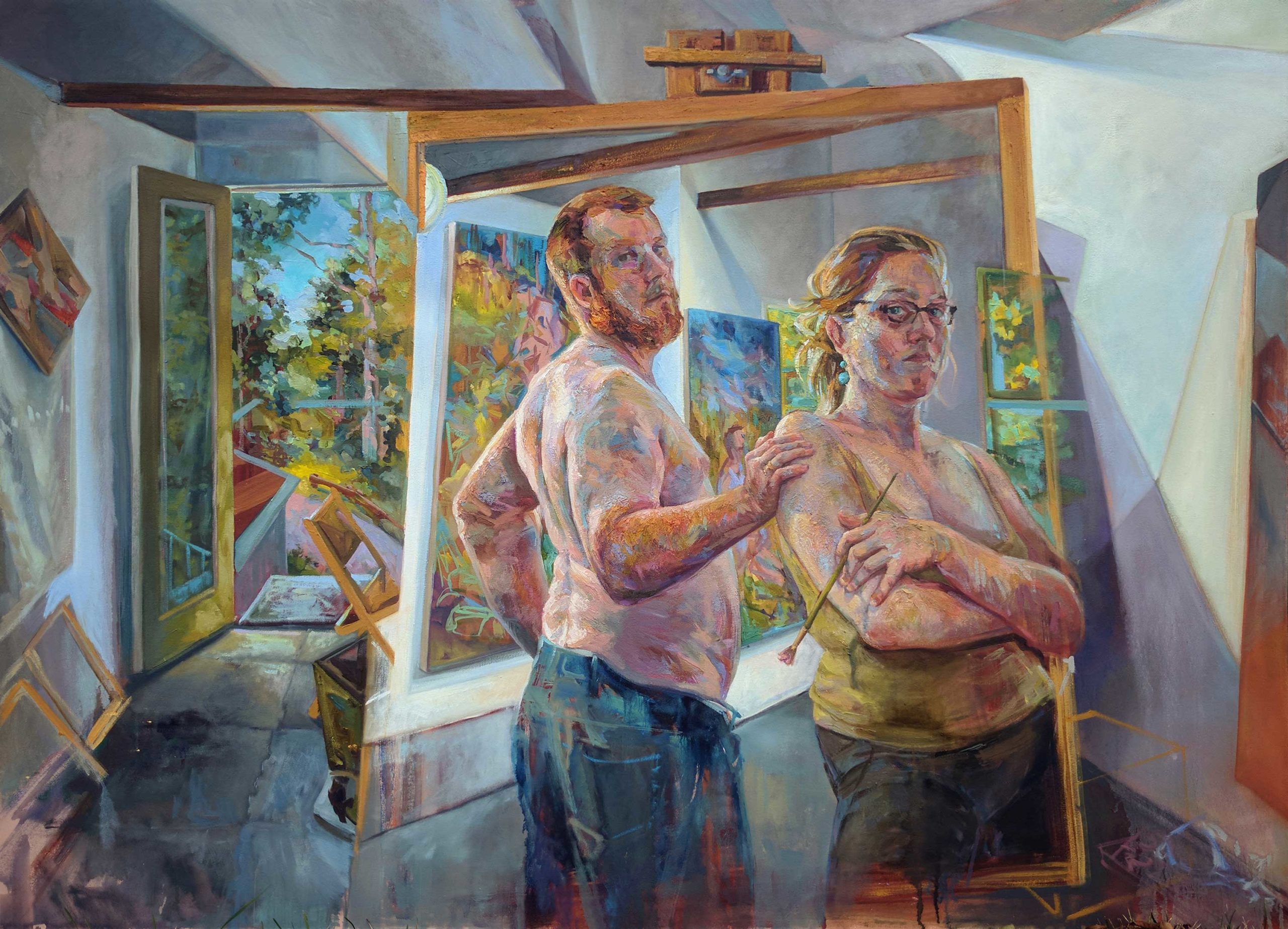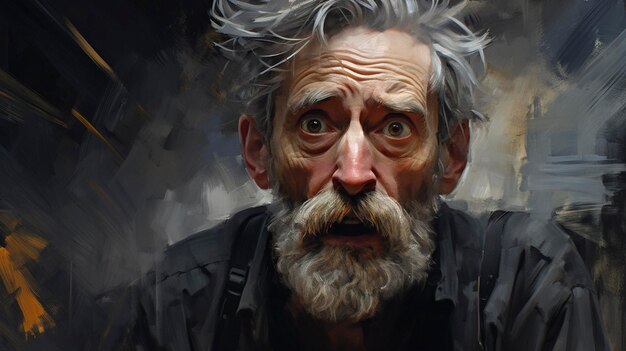Discover the very best Tips for Creating Stunning Figurative Oil Painting Artwork
Discover the very best Tips for Creating Stunning Figurative Oil Painting Artwork
Blog Article
The Advancement of Metaphorical Oil Painting: Comprehending Its Historic Relevance and Modern Interpretations
The development of figurative oil painting acts as an engaging lens via which to analyze the interaction between imaginative expression and historic context. From the thorough naturalism of the Renaissance to the stirring power of the Baroque, each era has actually contributed layers of meaning and technique to this ageless medium. Contemporary musicians, drawing from this rich heritage, are currently reinterpreting the human number in manner ins which challenge traditional narratives. As we explore these transformations, one should think about how the discussion in between existing and previous informs not just imaginative technique however additionally societal representations in a progressively complicated globe.
Beginnings of Metaphorical Oil Painting
The origins of metaphorical oil paint can be mapped back to the very early Renaissance in Europe, especially in the 15th century. This duration noted a significant separation from the flat depictions and inflexible forms particular of middle ages art. Artists began to discover naturalism, stressing the human figure and its emotional expression. The growth of oil paint permitted better depth of color and information, improving the realistic look and vibrancy of their work.

In this transformative period, figures were often illustrated within contextually rich atmospheres, showcasing not only their physical features however likewise their mental states. Leaders such as Jan van Eyck and Titian took advantage of the medium's convenience, utilizing layering strategies to attain brightness and texture. This innovation facilitated the portrayal of complex fabrics and the nuances of complexion, adding to the development of portrait and narrative scenes.
Moreover, the Renaissance focus on humanism promoted an appreciation for uniqueness, which consequently influenced musicians to produce even more relatable and vibrant figures - figurative oil painting. As a result, figurative oil painting became an effective lorry for storytelling and psychological engagement, preparing for future artistic motions and styles
Key Historic Motions
Significant historical movements have actually formed the development of metaphorical oil painting, each contributing unique philosophies and strategies that increased the medium's possibilities. The Renaissance noted a turning point, stressing realism and the human type, with artists like Leonardo da Vinci and Michelangelo pushing the borders of physiological accuracy and point of view. Following this, the Baroque period brought significant contrasts of light and shadow, exemplified by Caravaggio, who instilled spiritual styles with extreme emotionality.
The 19th century presented Romanticism and Realistic look, where artists such as Delacroix and Courbet challenged classical ideals, concentrating on private expression and everyday life. The development of Impressionism even more changed the medium by highlighting the effects of light and color, bring about a separation from standard representation.
In the very early 20th century, activities like Expressionism and Cubism redefined metaphorical painting with abstraction and the exploration of emotional deepness. Each of these movements not only reflected the social changes of their times but also laid the foundation for modern analyses. The interplay between these historic activities has actually developed an abundant tapestry of viewpoints and styles, affecting modern artists in their search of capturing the human experience on canvas.
Strategies and Materials Evolution

Throughout the Baroque period, techniques such as chiaroscuro and sfumato emerged, enhancing the emotional resonance of metaphorical compositions. Artists began to experiment with glazes and impasto, manipulating appearance and luminosity. By the 19th century, advancements like making use of pre-mixed paints in tubes changed ease of access, permitting musicians to repaint en plein air and catch the fleeting results of light.
The 20th century experienced the introduction of artificial pigments and mediums, which increased the scheme and modified the consistency of oil paints. The exploration of brand-new application techniques, such as palette knives and brushes of varying stiffness, additional varied imaginative expression. Jointly, these advancements mirror the progressing connection in between products, techniques, and the artistic vision inherent in metaphorical oil painting.

Contemporary Analyses
Contemporary analyses of metaphorical oil paint reflect a vibrant dialogue between practice and innovation, where artists challenge developed standards and explore diverse styles. This advancement manifests in various methods, as modern musicians mix timeless techniques with modern-day ideas, frequently addressing social, political, and personal narratives.
Many experts draw ideas from historic jobs, yet they infuse their pieces with modern perspectives, utilizing the human kind as a lorry for discourse on identity, culture, and gender. Artists significantly experiment with abstraction, distortion, and blended media, which allows for a broader interpretation of the number and its context.
Additionally, the usage of dazzling color schemes and unique make-ups typically offers to interfere with traditional viewing experiences, provoking essential involvement from audiences. This change in emphasis extends past looks; it mirrors a growing recognition of the intricacies of human experience in an interconnected world.
As metaphorical oil painting proceeds to progress, it continues to be an important medium for discovering the nuances of modern life, symbolizing both a regard for heritage and a commitment to progressive idea. The outcome is a rich tapestry of expression that resonates with the complexities of the modern-day human problem.
Influence On Modern Art
The impact of metaphorical oil paint on modern art is profound, as it has actually constantly influenced a myriad of creative motions and practices throughout the 21st and 20th centuries. From Expressionism to Surrealism and past, the exploration of the human figure has continued to be a central motif, allowing artists to share complex feelings and stories. This focus on figurative representation has actually brought about a re-examination of Check This Out traditional techniques, causing innovative strategies that blend realistic look with abstraction.
Moreover, modern artists have actually embraced figurative oil painting as a way to deal with social and political problems, utilizing the medium to challenge understandings of culture, identity, and sex. The rebirth of passion in metaphorical operate in current years reflects a web yearning for link in a progressively digital globe, where human experience and feeling are paramount.
Additionally, the dialogue in between metaphorical oil painting and contemporary art is evident in the works of artists such as Kehinde Wiley and Jenny Saville, who make use of historic referrals while infusing their items with modern relevance. Eventually, figurative oil painting continues to shape and redefine modern-day creative expression, emphasizing its long-lasting significance in the art globe.
Conclusion
The development of figurative oil painting highlights its historic importance and versatility across various imaginative movements. Inevitably, figurative oil painting stays an essential tool for checking out the human experience, resonating greatly in today's digital landscape.
The evolution of metaphorical oil painting serves as a compelling lens via which to examine the interaction in between imaginative expression and historic context.Substantial historic movements have formed the advancement of metaphorical oil painting, each contributing special viewpoints and methods that expanded the medium's opportunities.As historical motions formed the trajectory of figurative oil paint, the products and methods utilized by artists have likewise undergone substantial improvements. figurative oil painting.The influence of metaphorical hop over to these guys oil painting on modern-day art is extensive, as it has actually consistently influenced a myriad of creative activities and practices throughout the 20th and 21st centuries.The evolution of figurative oil paint highlights its historic relevance and versatility throughout numerous creative motions
Report this page